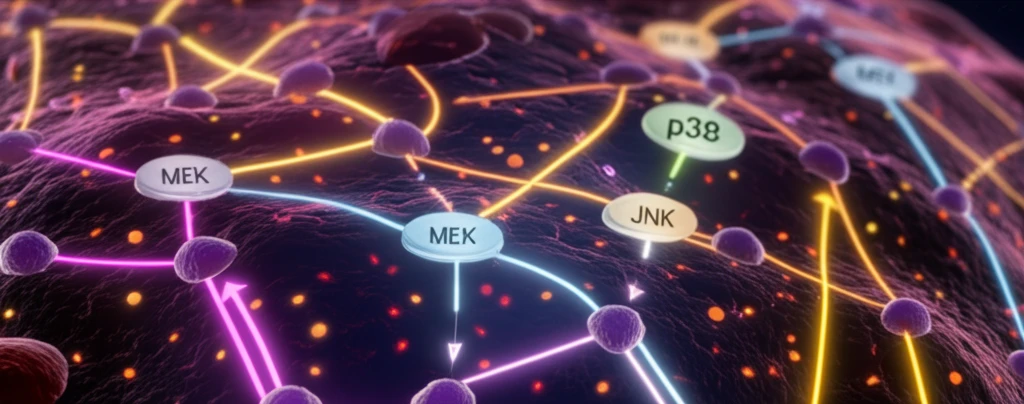
RA Relief Riddles: Why Common Treatments Fail & How New Insights Could Help
"Unraveling the complexities of rheumatoid arthritis: Understanding treatment resistance and discovering new pathways for effective relief."
Rheumatoid arthritis (RA) is a chronic autoimmune disease that causes joint pain, swelling, and loss of function, affecting millions worldwide. The quest for effective treatments has been challenging due to the complex nature of intracellular signaling networks that dictate how cells respond to therapies. Many people with RA find limited relief from available medications, highlighting the urgent need for new therapeutic strategies.
Recent research has explored why certain drugs, particularly those targeting the p38 kinase pathway, have failed in clinical trials. These failures aren't due to the drugs being ineffective in all contexts, but rather due to the complex ways cells compensate when key pathways are blocked. By understanding these compensatory mechanisms, researchers aim to develop more effective and targeted treatments for RA.
This article delves into the intricacies of RA treatment resistance, focusing on how different cellular environments can alter the effectiveness of drugs targeting the p38 pathway. We’ll explore new findings that shed light on why these treatments often fall short and what alternative strategies might offer more promising outcomes for those living with RA.
The Problem with p38 Inhibitors: Why They're Not Working as Expected

P38 inhibitors were initially promising due to their ability to reduce inflammatory cytokine secretion in preclinical models. However, clinical trials revealed that they did not provide significant benefits to RA patients. This discrepancy led researchers to investigate the underlying mechanisms that might explain this failure.
- Inflammatory vs. Mitogenic Contexts: In inflammatory environments, such as those found in RA joints, p38 inhibition leads to a greater increase in alternative signaling pathways compared to mitogenic environments.
- CREB's Role: The transcription factor CREB plays a crucial role in this compensatory response. CREB activation is predominantly induced by p38 in inflammatory conditions, but by MEK in mitogenic conditions. This difference explains why the effects of drugs targeting p38 or MEK vary significantly depending on the cellular context.
- Context Matters: The stimulatory context can alter the dominance in pathway cross-talk, even for a fixed network topology. This highlights the need to carefully consider the cellular environment when developing and using targeted drugs.
Looking Ahead: New Strategies for RA Treatment
Understanding why p38 inhibitors have limited success in RA has opened new avenues for research and treatment strategies. Future approaches may involve combining p38 inhibitors with other drugs that can prevent the activation of compensatory pathways. Additionally, targeting upstream regulators like TAK1 or downstream effectors like MK2 may offer more effective ways to modulate inflammatory signaling without triggering unwanted side effects. By carefully considering the cellular context and potential for cross-talk, researchers hope to develop more successful therapies for RA and other inflammation-related disorders, offering new hope for those seeking relief.
